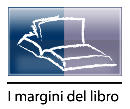 |
14, 2020 | |||
| Abstracts | versione italiana | |
| Saggio |
Angela Ferrari
Note sull’uso della virgola ai margini della scrittura letteraria e saggistica tra Settecento e Ottocento
In previous works I have shown that the history of the norm of use of the comma in Italian writing between the seventeenth and the early twentieth century can be explained as the transition from a morphosyntactic use to a communicative use. The first is sensitive to the superficial linguistic boundaries of the sentence; the latter, which is in use nowadays, depends on the informative − and therefore semantic − structure of the text. In this article I will assess the hypothesis about the norm in order to conclude if it is confirmed within a sampling of eighteenth-nineteenth century dedications (AIDI electronic corpus). Dedications are an interesting and innovative text type to examine. Compared to the texts I have previously analyzed, they offer a various set of non-literary (vs literary) and public (vs private) texts, written by highly qualified authors, both novelists and essayists, with different linguistic ideologies.
| versione italiana |
| Saggio |
Flavio Ferri-Benedetti
"Dell’opra eccitator primiero":
Metastasio, Farinelli e Ferdinando VI nelle dediche gemelle per la Nitteti del 1756
This article contextualises and analyses the double dedication featured on the first print of Nitteti’s libretto (1756), an opera seria written by Pietro Metastasio especially for Ferdinand VI’s court in Madrid, where Carlo Broschi, better known as Farinelli, was responsible for the musical entertainments. These two dedications not only underline the twinning between these two giants of 18th-century opera, but also their common understanding of artistic and professional values, especially with regards to the conception of a work as the author’s “offspring” and of its commission-production as the ultimate incarnation of a literary and musical relationship.
| versione italiana |
| Saggio |
Muriel Barbero
Ai margini del discorso artistico: il sonetto della Sistina di Michelangelo Buonarroti
The well-known caudate sonnet written by Michelangelo Buonarroti as he was painting the Sistine Chapel ceiling is a deeply ambiguous text, where the boundaries between alienate fiction and intimate confession, and between cheerfulness and gravity are difficult to draw. Following a reading of the text based on irony, as suggested by the very same choice of the comic-realistic genre, it is possible − not questioning the biographical significance of the sonnet − to understand these lines in a broader sense, considering in particular their relation to contemporary art discourse. The degraded and abased image of the painter which arises from the text is in fact diametrically opposed to the exalted and intellectual one, which many painters, first of all Leonardo da Vinci, were trying to impose around the same time. This article aims to demonstrate that this sublimated image of the painter’s work is, if not the very polemical target of Michelangelo’s text, at least the cultural background against which it has to be read in order to fully understand its implications.
| versione italiana |
